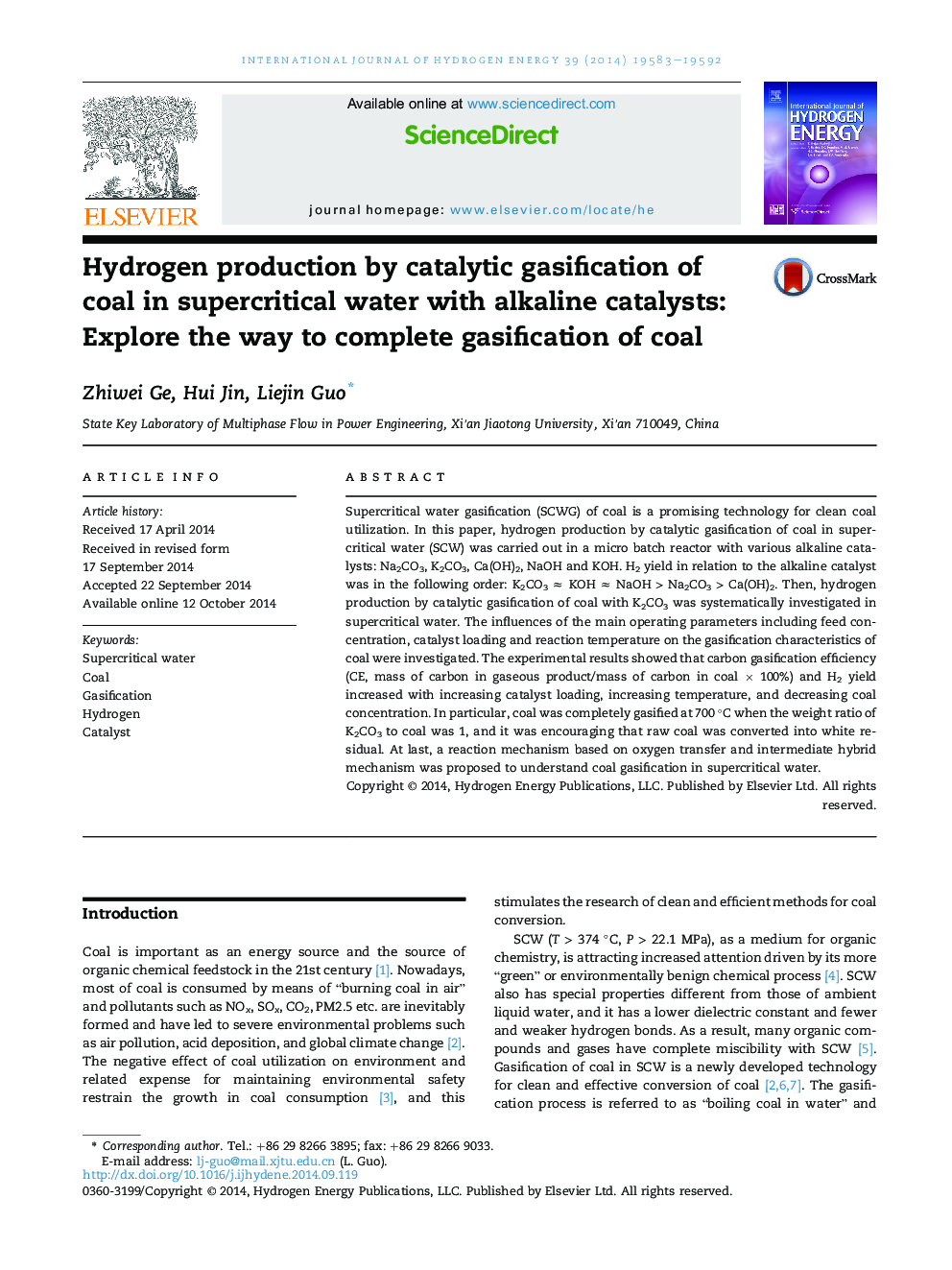| Article ID | Journal | Published Year | Pages | File Type |
|---|---|---|---|---|
| 1280709 | International Journal of Hydrogen Energy | 2014 | 10 Pages |
•Coal was gasified completely with K2CO3 at 700 °C in a micro batch reactor.•Raw coal was converted into white residual.•Some pits or micropores were found on the coal substrate with alkali metal catalysts.•A reaction mechanism was used to understand catalytic coal gasification in SCW.
Supercritical water gasification (SCWG) of coal is a promising technology for clean coal utilization. In this paper, hydrogen production by catalytic gasification of coal in supercritical water (SCW) was carried out in a micro batch reactor with various alkaline catalysts: Na2CO3, K2CO3, Ca(OH)2, NaOH and KOH. H2 yield in relation to the alkaline catalyst was in the following order: K2CO3 ≈ KOH ≈ NaOH > Na2CO3 > Ca(OH)2. Then, hydrogen production by catalytic gasification of coal with K2CO3 was systematically investigated in supercritical water. The influences of the main operating parameters including feed concentration, catalyst loading and reaction temperature on the gasification characteristics of coal were investigated. The experimental results showed that carbon gasification efficiency (CE, mass of carbon in gaseous product/mass of carbon in coal × 100%) and H2 yield increased with increasing catalyst loading, increasing temperature, and decreasing coal concentration. In particular, coal was completely gasified at 700 °C when the weight ratio of K2CO3 to coal was 1, and it was encouraging that raw coal was converted into white residual. At last, a reaction mechanism based on oxygen transfer and intermediate hybrid mechanism was proposed to understand coal gasification in supercritical water.
